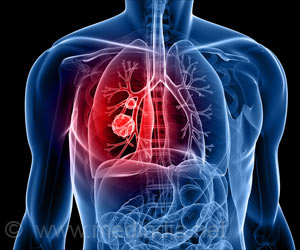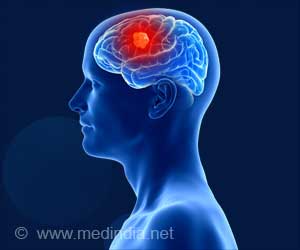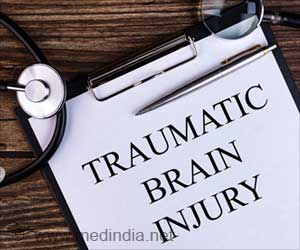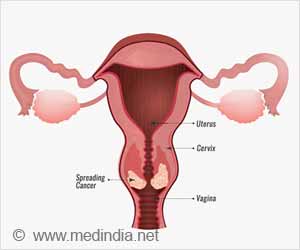A protein responsible for cancer-promoting cell signaling is also thought to keep the key component of its signalling pathway tied down and inactive, scientists suggest

"Shc is a checkpoint to prevent out of control cell growth, binding to Erk when a cell is not being stimulated by growth factors," Ladbury said. "Otherwise, the lower-level background signaling that's always present in a cell would be uncontrolled."
Keeping Erk in check while the cell idlesOverexpression of Erk occurs in many types of cancer, including ovarian and prostate cancer and Hodgkin lymphoma, so cellular control of its activity is important.
In the absence of external stimulation by growth factors, cells remain active but lower levels of cell signaling occur, which Ladbury compares to a car idling, ready to roll. Under these conditions control mechanisms are in place to prevent the cell kicking into gear. Shc turns out to be one of these controllers.
"We're essentially looking at the cell in a resting, but ready, state," Ladbury said. "I would argue that's probably more like a cell behaves in tissue, it's not normally getting a slug of growth factors as is often the way when we investigate signaling in experiments in the lab. There's still a lot going on in the cell, basically background activity."These findings point to a number of therapeutic possibilities, including the measurement of Shc concentration levels as a diagnostic tool and of finding small molecule drugs that block growth-factor signaling to Shc, keeping it bound to Erk, Ladbury noted.
Growth factors provide double boost for ErkWhen the appropriate growth factor receptor is stimulated Erk is activated in the MAP Kinase pathway. It dives into the cell nucleus and turns on a variety of genes, actions that contribute to cancer proliferation, blood vessel production and metastasis when signaling is out of control.
Advertisement
- Under non-stimulated conditions Shc binds to Erk in the cell cytoplasm at binding sites that are unique on both proteins.
- Stimulation via EGFR reduces this connection, but not by competing with Shc at the Shc-Erk binding site.
- Instead, on stimulation from outside the cells, EGFR adds phosphate groups to itself at specific sites. One of these forms a binding for Shc, which distorts the protein's shape, making it impossible for Erk to bind.
- Overexpression of Shc decreases the amount of activated Erk, because Shc mops up free Erk molecules.
- Depleting Shc expression with short hairpin RNA resulted in higher levels of activated Erk.
- When separated from Shc, Erk moves into the nucleus and activates genes even when the cell is not receiving a stimulus. Thus without the controlling influence of Shc, Erk can run riot in the cell giving rise to unrestrained cell reproduction.
Advertisement
EGFR stimulation not only sets off the normal activation of Erk via Shc and the MAPK pathway, Ladbury said, but also frees Erk for greater availability for activation by breaking the tie to Shc.
Co-authors with Ladbury are first author Kin Man Suen and Chi-Chuan Lin, Ph.D., Fernando Melo, Ph.D., Zamal Ahmed, Ph.D., and Stefan Arold, Ph.D., all of MD Anderson's Department of Biochemistry and Molecular Biology; Roger George, Ph.D., of the London Research Institute of Cancer Research UK; Eleanor Biggs, of the University of Bath, Bath, UK; and Melanie Drake and Swathi Arur, Ph.D., of MD Anderson's Department of Genetics.
Suen is a graduate student in The University of Texas Graduate School of Biomedical Sciences, which is run jointly by MD Anderson and The University of Texas Health Science Center at Houston. Ladbury and Arold also are affiliated with the Center for Biomolecular Structure and Function at MD Anderson.










